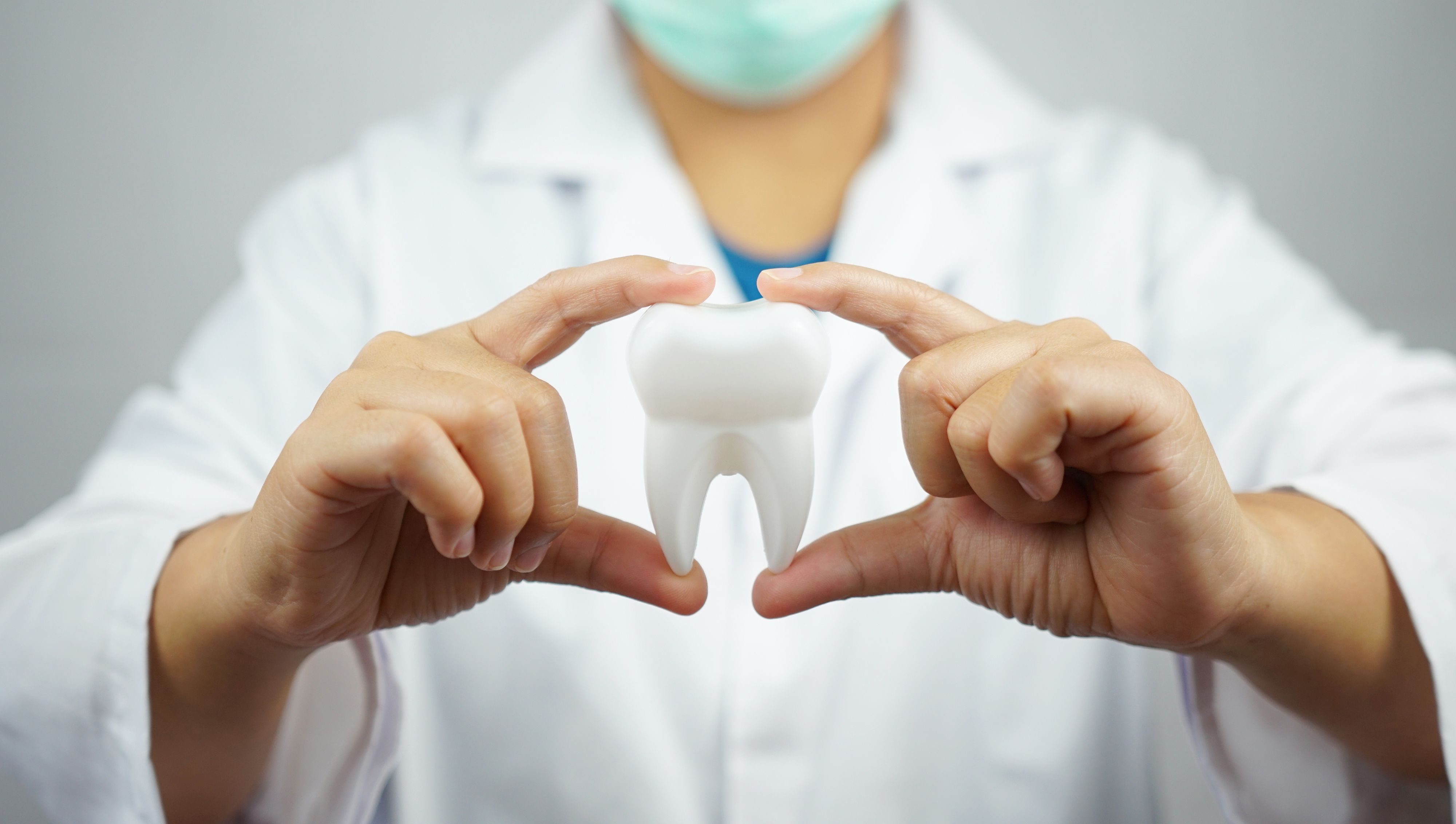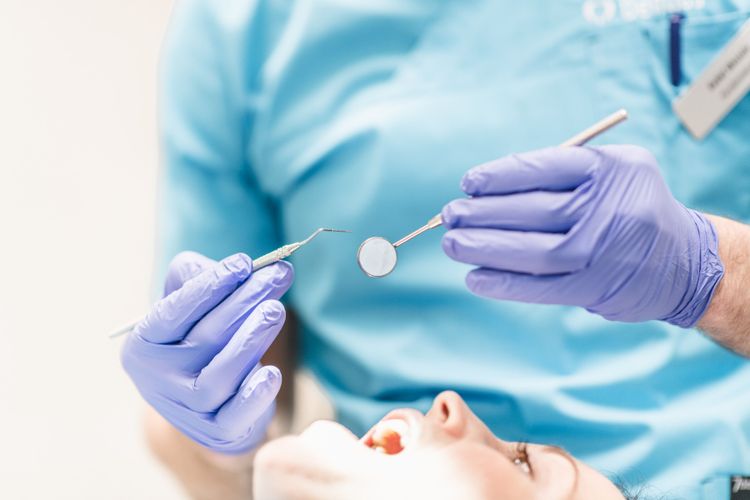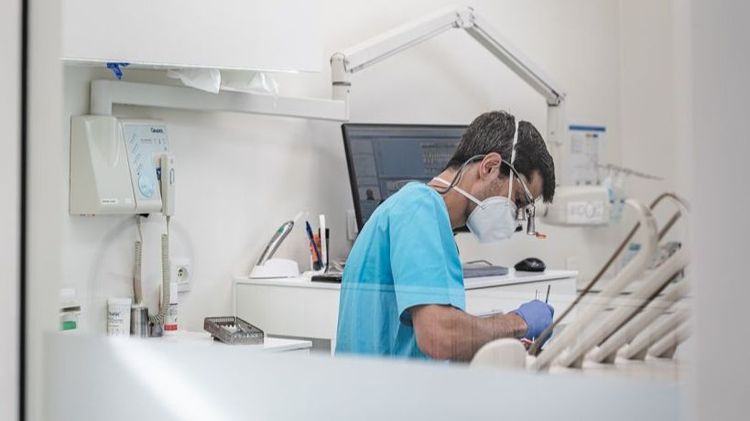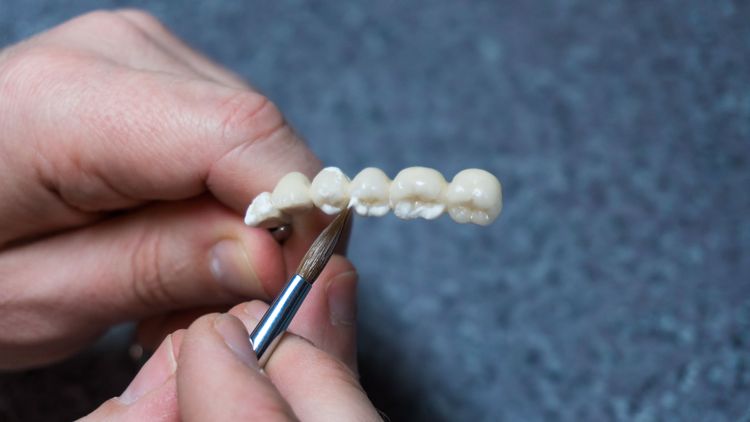

Crown and bridge work
If one or more teeth have been severely eroded, ordinary fillings may no longer suffice. This can be caused by extensive caries, trauma, endodontic treatment or cumulative repairs over the years. They then need a porcelain restoration for a durable reinforcing of the tooth.
These porcelain restorations are manufactured in a dental laboratory. During the first appointment, the tooth are reduced to a 'stump' and scans or impressions are made. Great importance is also attached to determining the colour of the teeth, or the desired colour for major repairs. Based on all this information, the laboratory can create a customised crown, that blends in with the shape and colour of your teeth as a whole and is a beautiful combination of aesthetics and functionality.
During this first appointment, the dentist will also immediately make a temporary crown. You can return home with the comfort you are used to.
A few weeks later, the final porcelain restoration is placed on the tooth using a cement. Depending on the amount of tissue loss, there are different types of restorations:
INLAY/ONLAY
Part of the tooth is repaired in porcelain, in order to save as much of your own healthy tooth tissue as possible.

Crowns
However, if a lot of tissue has been lost, a crown is placed over the entire tooth. This is called a crown.

Facings
If the problem is primarily aesthetic, but there is still sufficient healthy dental tissue present, it is also possible to improve the colour and shape by means of facings (veneers). These are porcelain shields that are placed on the visible part of the tooth. They are mainly used for the front teeth.

Bridges
A bridge is made to replace one or more missing teeth. A bridge is attached to two or more supporting teeth (pillars). These are the teeth located on either side of the missing tooth. The bridge forms a single whole and is cemented onto the pillar elements. The missing tooth is replaced by a floating intermediate part.

